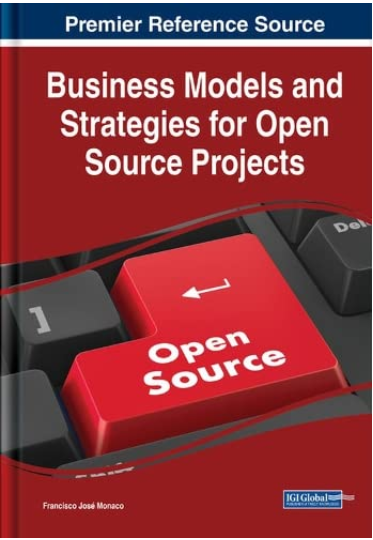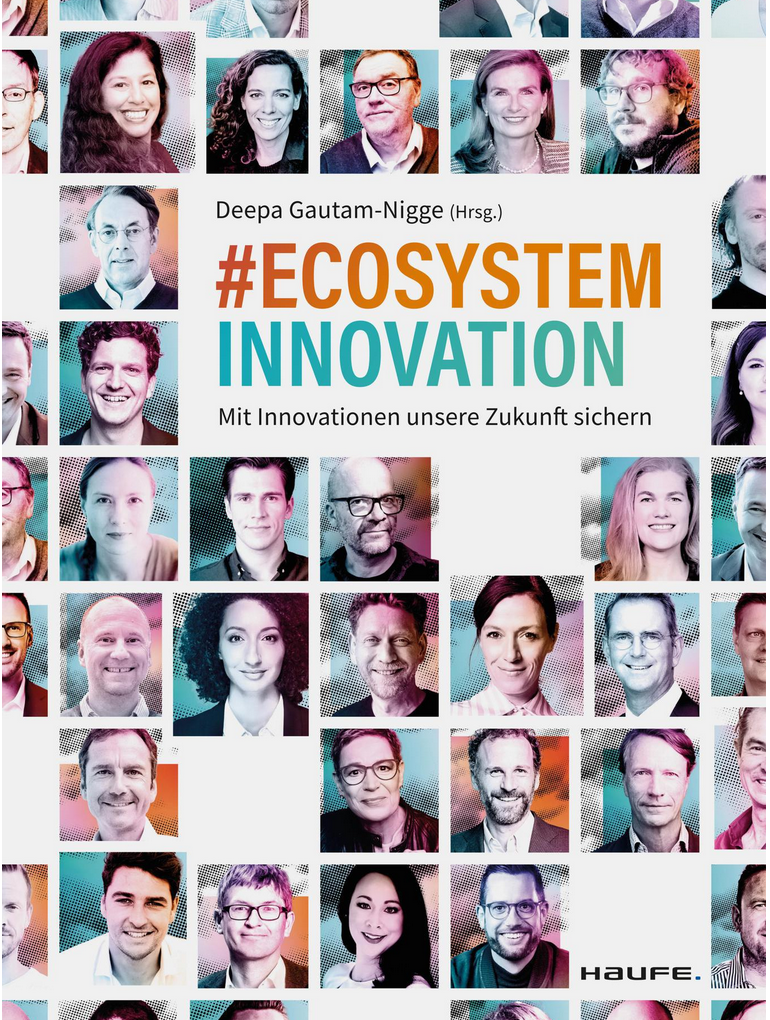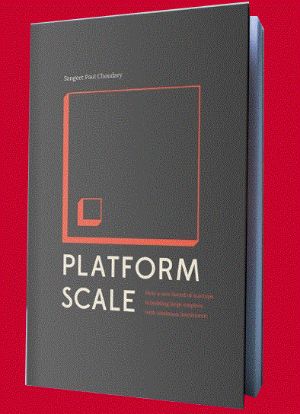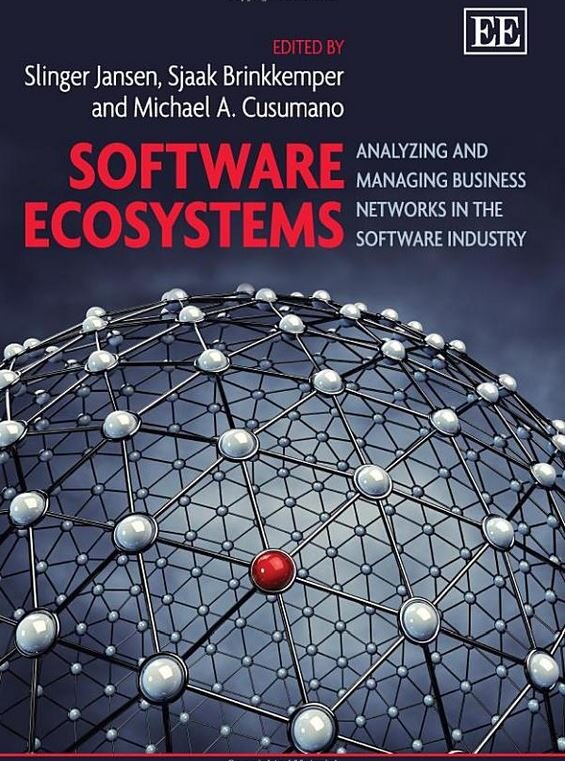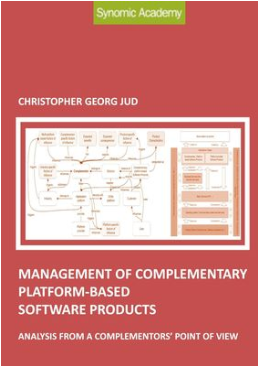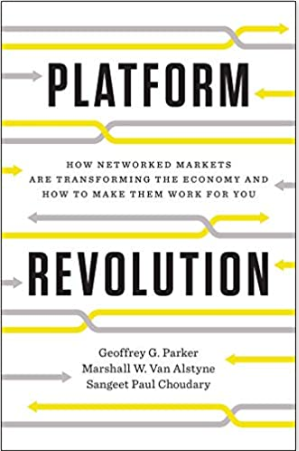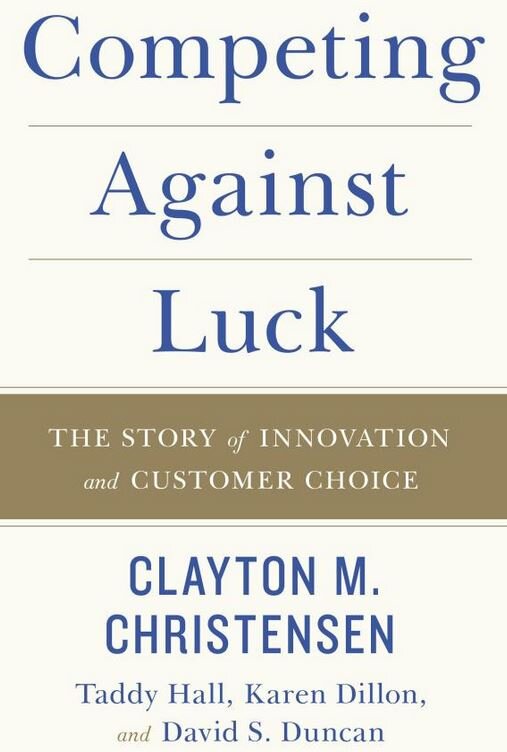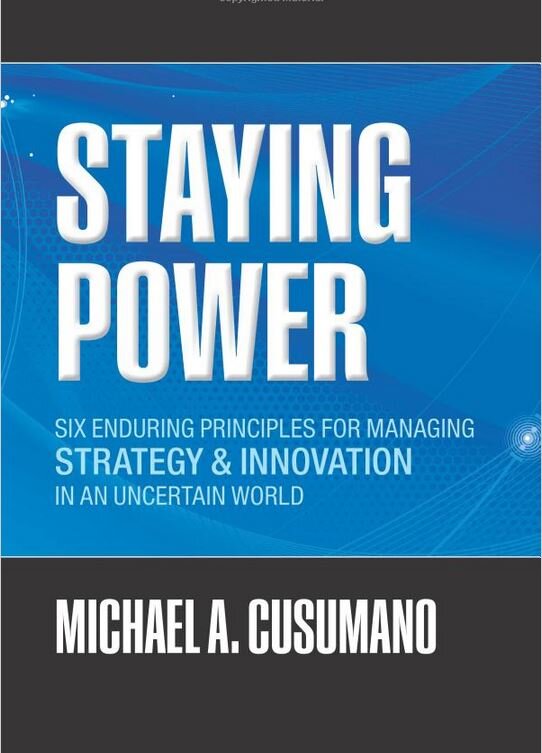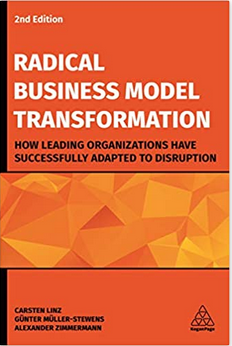
NEWS
How can you foster innovation in software ecosystems - six examples
Innovation is at the heart of every successful software ecosystem. Fostering a culture of innovation not only drives growth and success but also creates a competitive edge. Here are six examples of how you can foster innovation in software ecosystems:
1. Encourage a Collaborative Environment:
Create spaces for open communication and idea-sharing among software development teams. Collaboration fosters creativity and leads to innovative solutions.
2. Invest in Research and Development:
Allocate resources to R&D efforts to explore new technologies, methodologies, and trends. This investment can yield groundbreaking innovations.
3. Embrace Agile Methodologies:
Adopt agile practices to enable quick iterations, adaptability, and continuous improvement. Agile methodologies promote innovation by allowing teams to respond to change and deliver high-quality software.
4. Promote a Culture of Learning:
Encourage continuous learning and skill development among team members. By staying updated on the latest industry trends, individuals can bring fresh perspectives and innovative ideas to the table.
5. Support Hackathons and Innovation Challenges:
Organize events that challenge developers to ideate and create innovative solutions within a limited timeframe. Hackathons drive creativity and often result in pioneering software concepts.
6. Foster Entrepreneurial Mindset:
Encourage developers to think like entrepreneurs and take ownership of their projects. This mindset cultivates a sense of ownership and drive to innovate.
By implementing these strategies, software ecosystems can create an environment that nurtures creativity, experimentation, and advancement, ultimately leading to groundbreaking innovations.
Like the topic? Participate in our workshop tickets here
Why don´t you choose one of the following topics to continue:
Five sights to see when you come to EWSECO 2024 in Bamberg
As you wander through the picturesque streets of Bamberg, Germany, you will be treated to a wealth of historical and cultural sights that are sure to captivate you. Here are five must-see attractions that should be on any visitor’s itinerary when exploring this charming city.
1. Bamberg Cathedral: This stunning masterpiece of Romanesque architecture is a UNESCO World Heritage site, adorned with intricate carvings and magnificent religious art. Take the time to marvel at its awe-inspiring interior and climb the tower for breathtaking panoramic views of the city.
2. Altes Rathaus (Old Town Hall): Perched on an artificial island in the middle of the Regnitz River, the Old Town Hall is a unique and iconic symbol of Bamberg. With its half-timbered façade and stunning frescoes, this architectural gem is not to be missed.
3. Little Venice: Take a leisurely stroll along the picturesque fisherman’s houses lining the banks of the River Regnitz in the Little Venice district. This idyllic setting provides a perfect backdrop for a relaxing afternoon of sightseeing and photography.
4. Michaelsberg Abbey: This former monastery, perched atop a hill overlooking the city, offers a fascinating glimpse into Bamberg’s rich religious history. The abbey also houses a beer garden where you can unwind and savor the panoramic vistas while enjoying a refreshing drink.
5. Schlenkerla Brewery: No visit to Bamberg would be complete without sampling the city’s renowned Rauchbier (smoked beer) at the historic Schlenkerla Brewery. Immerse yourself in the cozy atmosphere of this traditional tavern and savor the distinctive flavors of this local specialty.
Whether you are drawn to Bamberg by its rich history, stunning architecture, or vibrant culture, these five sights promise to leave an indelible impression on anyone who has the pleasure of exploring this gem of a city in Germany.
Like the topic? Participate in our workshop tickets here
More details and background information can be found in these books:
Current hot research topics in software ecosystems and platforms
In the current landscape of research concerning software ecosystems and platforms, there is a notable surge in interest towards various trending subjects.
A significant focal point revolves around the evolution and dynamics of software ecosystems, investigating the progression of these intricate systems comprising interdependent software elements and entities over time. Scholars are immersing themselves in the underlying mechanisms steering ecosystem development, including platform governance, ecosystem configuration, and the involvement of key stakeholders. Another pivotal subject entails platform ecosystems and their influence on innovation and competitive dynamics. Academics are scrutinizing how the dynamics of platforms impact strategies for innovation, competitive interactions, and the generation of value within ecosystems.
Grasping the interconnectedness among platform governance, ecosystem structure, and innovation is paramount for organizations aiming to excel in digital markets. Moreover, the advent of novel technologies like blockchain, artificial intelligence, and the Internet of Things is reshaping software ecosystems and platforms. Researchers are probing into how these technologies disrupt conventional ecosystems, forge fresh avenues for collaboration, and affect ecosystem governance and sustainability.
Furthermore, the ascent of open-source software and collaborative development models is reshaping the terrain of software ecosystems. Investigations are analyzing the ramifications of open-source communities, decentralized development processes, and the contribution of participants in shaping ecosystem dynamics and platform advancement.
On the whole, the realm of research on software ecosystems and platforms is dynamic and interdisciplinary, encompassing realms such as network theory, innovation management, digital platforms, and software engineering. By tackling these trending subjects, researchers aspire to offer insights that can aid organizations in navigating the intricacies of contemporary software ecosystems and harnessing platforms for sustainable expansion and innovation.
Like the topic? Participate in our workshop tickets here
More details and background information can be found in these books:
Google business models and revenue sources #ewseco
Google functions under diverse business models and revenue streams. Presented here are five illustrations:
1. The primary source of revenue for Google is the advertising displayed on its search engine and various platforms such as YouTube. In 2020, Google's advertising revenue reached approximately $147 billion, making a substantial contribution to its profits.
2. Cloud Services: Google Cloud provides cloud computing services to enterprises, generating revenue through subscription-based frameworks. The revenue from Google Cloud in 2020 was about $13 billion, displaying an increasing impact on profits.
3. Sales of Hardware: Google markets hardware items like Pixel smartphones, Nest smart home gadgets, and Chromecast. The revenue from hardware sales in 2020 was about $10 billion, with profit margins varying among product categories.
4. Play Store: Google gains revenue from the Play Store by receiving a share of app sales and in-app transactions. The revenue from the Play Store in 2020 was estimated at $10 billion, with substantial profit margins attributed to the digital essence of the platform.
5. Licensing and Other Services: Google also derives revenue through licensing contracts, collaborations, and other services such as Google Workspace (previously known as G Suite). These services collectively contribute to Google's overall revenue and profits.
Like the topic? Participate in our workshop tickets here
More details and background information can be found in these books:
Software strategy selection: is build, buy, partner sufficient or do we have to add open source to the game?
Strategy selection
The best innovation and growth strategy is to combine organic and inorganic growth. SAP has successfully applied organic innovation and growth resulting e.g. in SAP HANA, SAP S/4 HANA as well as inorganic innovation and growth via acquisitions like Qualtrics and Calliduscloud.
Build, buy, partner
For me, the most important distinction between build or buy is the window of opportunity that you have. In technology markets, there are frequent changes of market direction. If you’re lucky, you had started your solution in time to build something that is en vogue right now. But if you’re not lucky, you need to acquire capabilities that the market needs today. But is this the only option you have?
Opportunity and risk in building and acquiring solutions
To be frank, with the current state of technology due diligence on to be acquired companies there is no difference in risk to build or to buy. When building products, you trust your developers to build something great. The a priori likelihood of success is 50%. Same likelihood applies for acquiring technology. In addition, acquired technology exists, has customers, success and failure history. So, what is the impact of this statement on build decisions?
Build decisions
Build decisions are made based on anticipated market trends. So don´t be suprised when you find out that you made the wrong decision. It is perfectly natural to take wrong decisions. But how can you fix such a wrong decision? I have two proposals: The first one is to start massive marketing to convince customers and markets that what you built is the right thing. Tough. The second option is to buy your way into front and center of the market. What are these the only options you have?
Outsource your worries
What we need to look at is in another alternative. You could leverage an existing open source solution with a license that permits commercial use to jumpstart your building efforts. And you build differentiating, proprietary technology on top.
If the open source community behind that solution is being active enough, you will save massive effort for support and maintenance of the solution.
It also makes financial and strategic sense to spend your money wisely on functionality where you can differentiate your offering from the competitors’ offerings.
Like the topic? Participate in our workshop tickets here
Why don´t you choose one of the following topics to continue:
You need to know about Platforms, the API economy, software ecosystems.
Platforms, the API economy, software ecosystems. The European Workshop on Software Ecosystems taking place in beautiful Bamberg, Germany on Nov 27 24 has it all
Here are five reasons to join.
Reason 1: The keynotes
Reason 2: Get the latest on the API economy.
We cover API management, launching platforms based on APIs, ways to grow your existing business with APIs as well as management of companies using the APIs.
Reason 3: Get the latest on creating and scaling business networks.
From the keynotes of Schwarz Group on retail, Ory and CloudBlue in software to academic presentations showing key properties of business networks in B2B markets and how to engage complementors on platforms.
Reason 4: Learn about growth opportunities for your company and for startups
We have it all, from M&A growth to growing software companies based on commercial as well as open-source business models. And we cover startup ecosystems, too.
Reason 5: See and discuss with key influencers in this space
TICKET SALES
Click HERE to buy tickets
The top 5 global companies with aggregator business models
The European Workshop on Software Ecosystems is an annual event which connects top notch researchers and business professionals in the field of software and platform ecosystems as well as business networks. Here is an example of a topic we will discuss at the event.
The top 5 global companies with aggregator business models, revenue, and growth rate in the last 5 years are:
1. Amazon - Revenue: $386 billion (2020), Growth Rate: 21% (2020-2024).
2. Uber - Revenue: $14.1 billion (2020), Growth Rate: 25% (2020-2024).
3. Airbnb - Revenue: $3.4 billion (2020), Growth Rate: 30% (2020-2024).
4. Booking.com - Revenue: $15.1 billion (2020), Growth Rate: 18% (2020-2024).
5. Expedia - Revenue: $11.7 billion (2020), Growth Rate: 15% (2020-2024).
Like the topic? Participate in our workshop tickets here
More details and background information can be found in these books:
How can you foster innovation in software ecosystems: six examples
Innovation lies at the core of every thriving software ecosystem. Presented here are six instances of how one can cultivate innovation within software ecosystems:
1. Cultivate a Collaborative Atmosphere: Establish venues for transparent communication and exchange of ideas among software development groups. Collaboration stimulates ingenuity and results in inventive resolutions.
2. Allocate Resources to Research and Development: Conduct research and development initiatives to investigate novel technologies, methodologies, and trends. This allocation has the potential to generate revolutionary innovations.
3. Embrace Agile Approaches: Embrace agile methodologies to facilitate rapid iterations, flexibility, and ongoing enhancement. Agile methodologies foster innovation by empowering teams to adapt to changes and deliver top-notch software.
4. Encourage a Learning Culture: Promote continual learning and enhancement of skills among team members. By keeping abreast of the latest industry trends, individuals can introduce fresh perspectives and innovative concepts.
5. Support Hackathons and Innovation Competitions: Coordinate events that challenge developers to brainstorm and devise innovative solutions within a defined timeframe. Hackathons stimulate creativity and frequently lead to pioneering software ideas.
6. Cultivate an Entrepreneurial Mindset: Motivate developers to adopt an entrepreneurial approach and take responsibility for their projects. This mindset fosters a sense of ownership and determination to innovate.
Through the implementation of these strategies, software ecosystems have the potential to establish an environment that fosters creativity, experimentation, and advancement, ultimately leading to groundbreaking innovations.
Like the topic? Participate in our workshop tickets here
More details and background information can be found in these books:
Software partnerships and business models: OEM : join the European workshop on software ecosystems
The European Workshop on Software Ecosystems is an annual event which connects top notch researchers and business professionals in the field of software and platform ecosystems as well as business networks. Here is an example of a topic we will discuss at the event.
OEM
In an OEM scenario the software vendor provides OEM software to the software partner. The software partner sells the OEM software as part of his solution. Usually, the software partner charges no price for the OEM software, but for his own solution. This is the key difference between OEM and resell.
The software vendor delivers the OEM software to the partner, which pays a license fee and maintenance fee to the software vendor. The license fee for the OEM might be a share of the revenue of the partner product containing the OEM software. Or it might be a constant fee that applies per copy of the OEM software shipped to the customer.
Business Model Canvas for OEM software
In a generic view, the value proposition of outbound OEM for a customer (software vendor) is that the customer saves development cost and time and gets a quality product.
For customer segments, this business model is generally limited to software vendors but might also apply to hardware vendors shipping hardware with embedded software. Based on the specific functionality of the OEM software, it might be further limited to specific software vendors. Customer relationships to software vendors using the software are important. As a consequence, the network of partner companies is the main channel.
More details and background information can be found in these books:
The European workshop on Software ecosystems is back!!
Join us on November 27, 2024, in Wolrd Cultural Heritage Site Bamberg for a hybrid event dedicated to the discussion of software ecosystems, platform ecosystems, and business networks in both research and practice.
📝 Event Details: "The European Workshop on Software Ecosystems is a great meeting of minds to discuss the impact of software ecosystems on business today. A platform strategy needs to be high on the agenda for CIOs and this workshop takes the right steps in this direction." — Sangeet Paul Choudary, CEO of Platformation Labs and Co-author of international best-seller Platform Revolution.
Key Topics:
Platform Business Models like e.g. aggregator business models
Emerging Software Ecosystems like e.g. GenAI ecosystems
Business Networks
Growth Strategies based on Software Ecosystems and Business Networks
New: AI Business Models and Ecosystems

